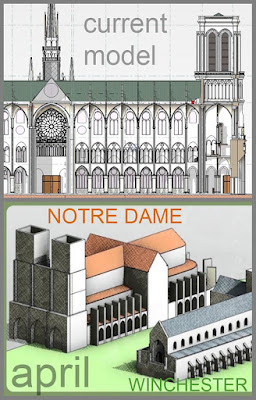I flew in to Tampa, via London & Miami. 24 hours from take off to landing. Still managed a quality weekend with my daughter Wendy. We met up with Alfredo at a great little Colombian restaurant and later on Wendy and Michael tried out the VR experience of Notre Dame via the Enscape3d executable, and the Oculus Rift S. The cathedral is a 19th century neogothic design in the city where the restaurant owners come from. Manizales, look it up on wikipedia like I did.
Five hour direct flight on a budget ticket. Despite some turbulence i was able to do some sketching on my Samsung Note 8 with Sketchbook Pro. It’s basically a trace over, but I’m letting decisions float up from my subconscious about how loose or precise to be in different areas. Ultimately its an opportunity to engage with the form in a different way and see what thoughts drift across my brain in the process.
Vegas is not my favourite city in the world but it’s an interesting place to see at least once. Like Dubai it has a penchant for taking wonderful historic places and blowing them out of all proportion in the copying process. But it’s a fantasy world so no need to get all pedantic.
There is a message from Francois saying he has done some work on the “triangular” windows that bring some light into the triforium galleries that overlook the nave. I got an error message and the glass disappeared, so I loaded it again, this time overwriting the parameters with the ones in the family. That fixed it so I was able to refresh the Enscape3d executable in time for my afternoon presentation. It’s so cool that we can access the model over a conference WiFi, make a few changes and synchronise
The night shot from Enscape was an accident really, not sure why it is illuminated like that, but it really looks cool. Big old buildings are always really atmospheric at night time, spooky perhaps.
Meanwhile Alfredo was adding a small rose window modelled by his friend Marc. That’s up in the transept gable and must bring light into the roof void. Things are moving forward nicely.
And so to the keynote. Thousands of people sitting in a rock concert atmosphere with big screens and coloured light beams. Several impressive case studies. Airbus factory layouts optimised using algorithms to cycle through thousands of options. High Rise hotel using factory built modular rooms. Probably the stand out for me was Build Change using Revit and Dynamo to speed up the design of retrofitted strengthening of homes in earthquake prone areas.
Possibly the most amusing was Autodesk and VW teaming up to reinvent the wheel. It’s for the new “electric combi” not sure about the clean ability of those orange spiders webs, but they are supposed to be strength to weight optimised. Time will tell.
Before I knew it 4.30 came around and I had to stop obsessing about the first few sentences and just blunder into my presentation. The audience was fantastic. Very few empty seats, and lots of enthusiasm afterwards. But I was tired.
I woke in the early hours of this morning and started organising images for this blog post. I had fallen asleep quite early and missed out on the evening party BIM track had invited me to. Not as young as I used to be. Lying in a hotel bed using PIXLR on my phone to create some atmospheric images of those triangular windows.



































